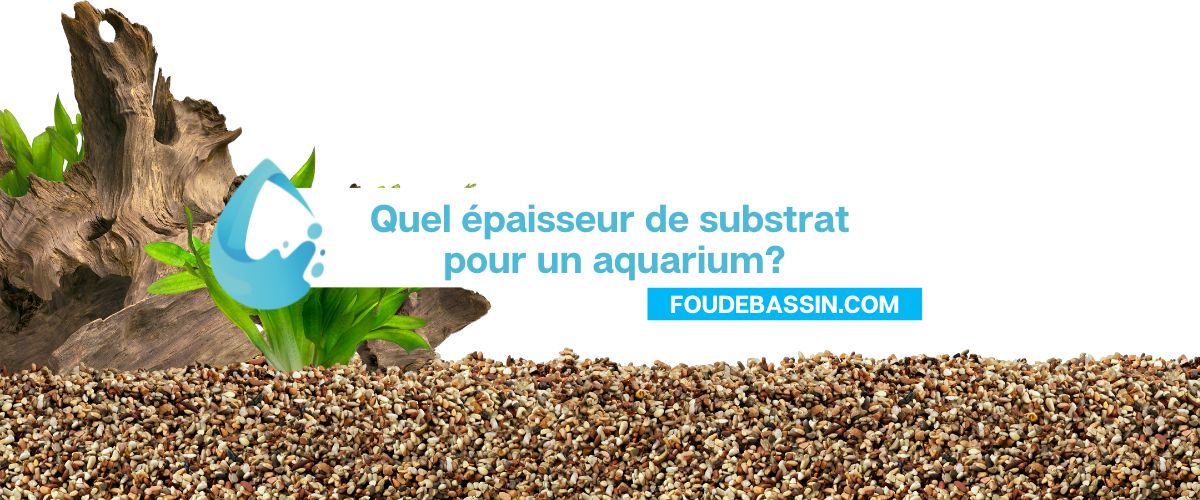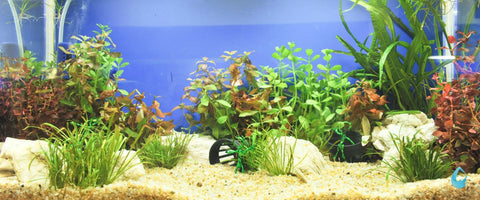Retrouvez ici les indispensables et meilleures ventes pour nos propriétaires de bassin.
Retrouvez ici les indispensables et meilleures ventes pour nos propriétaires de bassin.

The thickness of the substrate in an aquarium depends on several factors, including the type of fish and plants you have, the size of your tank, and your personal preferences. Here are some general guidelines for choosing substrate thickness in an aquarium:
For fish that dig and like to bury their food, such as African cichlids, a thicker substrate may be necessary (5-7 cm).
For fish that do not burrow and do not require substrate for feeding, such as angelfish, a thickness of 2-3 cm may be sufficient.
For aquarium plants, a thickness of 3-5 cm may be sufficient, but some types of plants need a thicker substrate to grow properly. Check the specific needs of your plants before choosing the thickness of your substrate.
It is important to note that the thicker the substrate, the more difficult it will be to clean and maintain. If you opt for a thicker substrate, you may need to use a substrate vacuum to maintain a good level of cleanliness in your aquarium.

The substrate in an aquarium consists of a layer of nutrient soil on top of a layer of fine sand. As a general rule, it is recommended to lay a layer of 4 to 5 cm of nutrient soil (see JBL substrates in our online shop) and to place 3 to 4 cm of sand on top (also available in JBL). Avoid sand that is too coarse, as it does not allow the plant roots to anchor themselves properly and does not hold the nutrient soil well.
The thickness of the substrate can vary depending on the planting density and the requirements of the different plants chosen. If you are only planting in certain parts of the aquarium, you can put the nutrient soil only in these places and cover the rest of the surface with sand. In any case, to ensure good plant support and good rooting, the total thickness of the substrate must be at least 7-8 cm.
Aquipond Greenstab - Natural treatment against pond algae It is a natural product that helps limit algae at any time. It also has a prevent...
View full detailsReduces the layer of silt in the pond by at least 40% Easy to use with less impact on biodiversity Prevents fermentation, bad odors. pH ...
View full detailsOrganic dye to block plant growth by limiting photosynthesis ORGANIC PRODUCT NON TOXIC TO HUMANS (DIVING) AND FISH. 100% NATURAL AND BIODE...
View full detailsThe positive effects of barley straw have been known to water enthusiasts for a long time. But currently barley straw is difficult to find and i...
View full detailsReduces at least 40% of the layer of silt in the pond Easy to use with less impact on biodiversity Prevents fermentation, bad odors. ...
View full details
Leave a comment